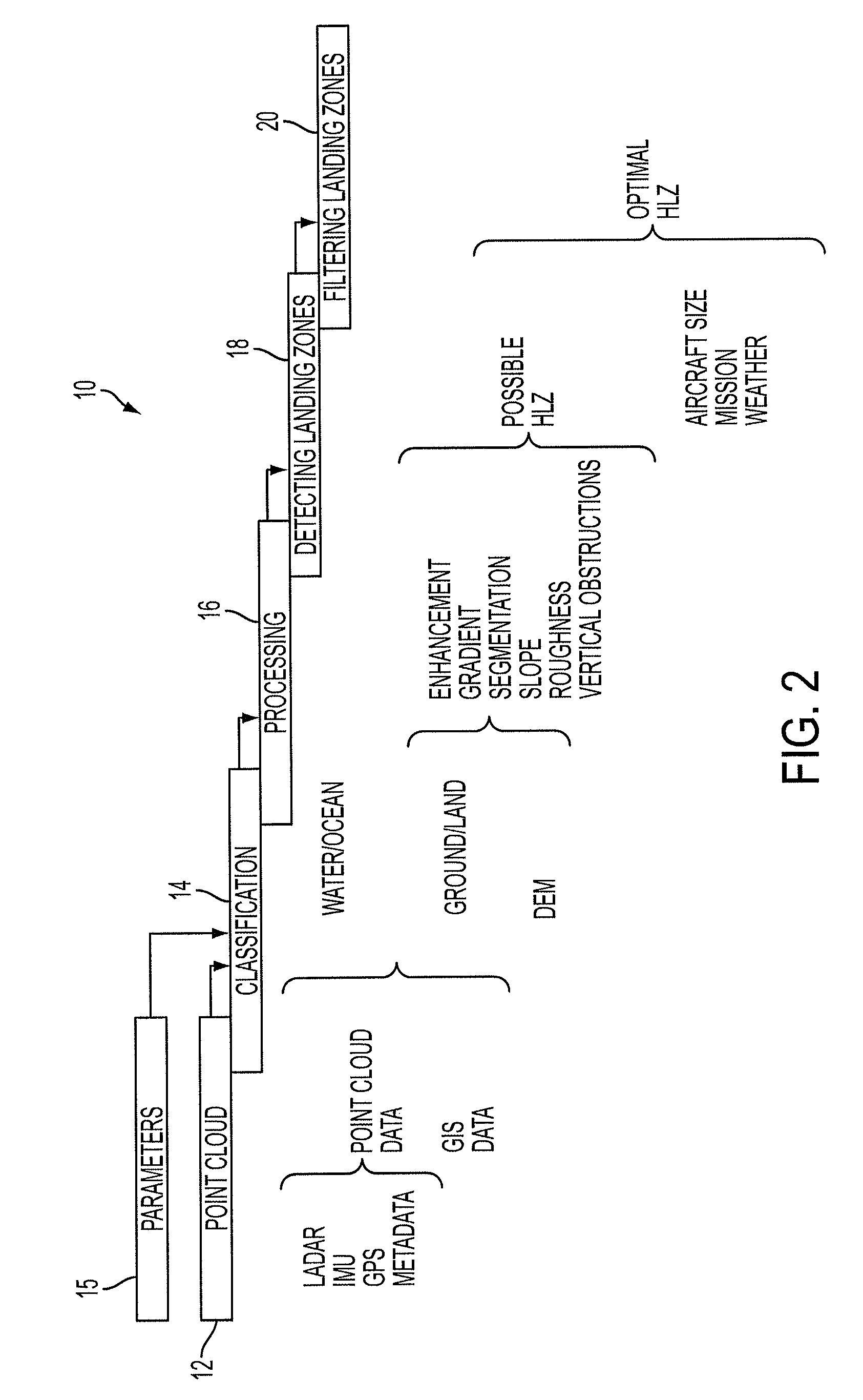Point cloud visualization of acceptable helicopter landing zones based on 4D LIDAR
a visualization and helicopter technology, applied in the field of point cloud data derived from the light detection and ranging (lidar) system, can solve the problem of not providing the landing zone area in real-time, and achieve the effect of preventing further processing of the portion
- Summary
- Abstract
- Description
- Claims
- Application Information
AI Technical Summary
Benefits of technology
Problems solved by technology
Method used
Image
Examples
Embodiment Construction
[0067]As will be explained, the present invention processes point cloud data, in the x, y, z format, as a function of time (t). This data is obtained and processed in real-time by system 100, for example, shown in FIG. 1. As shown, system 100 includes GPS 102, LADAR (or LIDAR) 104, inertial measuring unit (IMU) or inertial navigation system (INS) 106 and metadata input module 107 configured to provide information to processor(s) 108. The LADAR operates the same way as a video camera, providing a sequence of image frames (x, y, z format) as a function of time (t). For example, the LADAR may operate at 30 frames per second. Thus, the LADAR provides 4-dimensional (4D) data, advantageously for real-time applications. It will be appreciated that the terms LADAR and LIDAR are used interchangeably herein.
[0068]The processor 108, or several processors 108 may include any computer, or multiple computers, executing feature extraction algorithms, or processing geo-referenced and non-geo-refere...
PUM
 Login to View More
Login to View More Abstract
Description
Claims
Application Information
 Login to View More
Login to View More - R&D
- Intellectual Property
- Life Sciences
- Materials
- Tech Scout
- Unparalleled Data Quality
- Higher Quality Content
- 60% Fewer Hallucinations
Browse by: Latest US Patents, China's latest patents, Technical Efficacy Thesaurus, Application Domain, Technology Topic, Popular Technical Reports.
© 2025 PatSnap. All rights reserved.Legal|Privacy policy|Modern Slavery Act Transparency Statement|Sitemap|About US| Contact US: help@patsnap.com



